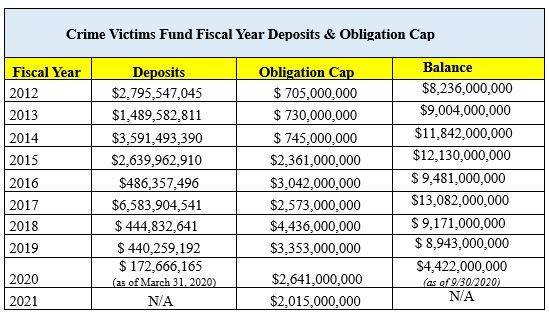Senate Committee on Appropriations Releases FY22 Bills
Please Note: the Senate Commerce, Justice, Science, and Related Agencies, Fiscal Year 2022 appropriations bill releases $2.65 billion from the CVF, $635 million more than the fiscal year 2021 enacted level and the same as the President’s budget request.
Chairman Leahy Releases Remaining Nine Senate Appropriations Bills
WASHINGTON (Monday, Oct. 18, 2021) – Senate Appropriations Committee Chairman Patrick Leahy (D-Vt.) Monday released the remaining nine Fiscal Year 2022 Appropriations Bills. Monday’s announcement follows months of Leahy calling for bipartisan, bicameral negotiations with the White House on topline spending and the successful, bipartisan passage of the Energy & Water, Military Construction and Veteran’s Affairs, and Agriculture and Rural Development appropriations bills out of the Committee back in August.
The bills comply with the topline spending allocation contained in the Fiscal Year 2022 Budget Resolution. Combined with the three bills reported from the Appropriations Committee in August, the bills provide a 13 percent increase for non-defense discretionary programs and a 5 percent increase for defense programs. The five percent increase for defense programs is consistent with the bipartisan National Defense Authorization Act (NDAA) reported from the Senate Armed Services Committee and passed by the House with bipartisan support last month. These bills are largely a product of bipartisan work to address both Democratic and Republican funding priorities.
Senator Leahy said: “These bills make important investments in our nation’s infrastructure, our environment, and the middle class, including historic increases to promote affordable housing, educate our nation’s children, combat climate change, and improve healthcare. I have previously called for bipartisan, bicameral, negotiations on topline spending for Fiscal Year 2022, and I renew that call today so we can enact all 12 appropriations bills by December 3rd, when the current Continuing Resolution expires. In the meantime, these bills demonstrate how we can make smart investments on behalf of the American people within the topline approved by Congress, and I hope will help advance the process. The alternative to completing the appropriations process is a full-year continuing resolution, which does not serve the American people and locks in outdated spending priorities. As Senators, and Members of Congress, we should do our job, make the hard choices, and complete our work on behalf of the American people.”
A topline summary of all nine bills prepared by the office of Chairman Leahy is available HERE.
Below is the link to the legislative text, explanatory statement, and a summary for the Commerce, Justice, Science, and Related Agencies, Fiscal Year 2022 appropriations bill:
If you have any questions please feel free to contact me at daisy@navaa.org.

